Grandparenting can be one of life’s greatest joys. Whether you’re a new or expecting grandparent, you’re probably looking forward to this new chapter of life with unabashed delight. But like any other major transition in life, becoming a new grandparent presents new challenges. What role will you play? How will you fit in with the growing family? What’s changed since you were a parent? And what if you make a misstep?
The answers to these questions aren’t always clear-cut, and everyone’s situation is unique. But whatever your circumstances, certain universal truths apply. These tips and guidelines can help you navigate this time with greater ease—and discover its greatest blessings.
Grandparenting Books
One of the best ways to get ready for grandparenting is to read up on the subject. Grandparenting books run the gamut, from journals and keepsake albums to guides on making the most of your relationship with your grandchild—and your grandchild’s parents. Here are a few helpful books to reach for.
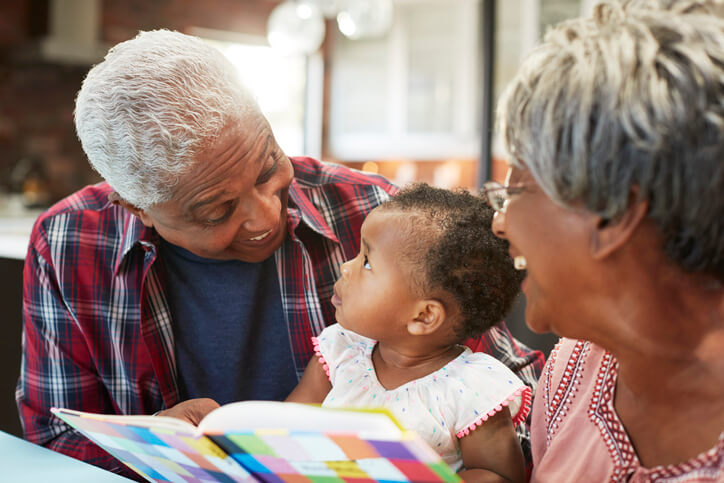
Books to Take a Look At
- “Becoming Grandma: The Joys and Science of the New Grandparenting” by Lesley Stahl: A journalist known for her work on CBS’ “60 Minutes,” Stahl writes about becoming a grandmother for the first time. She shares her own challenges, insights, and lessons learned, and offers an in-depth look at the important part grandparents play in the lives of their children and grandchildren.
- “Be the Best Grandparent” by The Grandparents’ Association: This authoritative practical guide offers advice and fun activities to bring you closer to your grandchildren, whether they live next door or far away. You’ll also learn ways to support your grandchild’s growth without interfering.
- “The Grandparent’s Handbook: Games, Activities, Tips, How-Tos, and All-Around Fun” by Elizabeth Laban: This book is full of advice and tips, and a wealth of creative ideas for keeping the grandkids busy, engaged, and entertained.
- “The Grandma Book” and “The Grandpa Book” by Todd Par: Featuring colorful illustrations and simple one-liners, these children’s books portray the different ways grandparents show their grandchildren love—and celebrate the unique and special relationship they share.
Grandparenting Classes
While there’s plenty to learn from a book, grandparenting classes provide a live learning experience with a professionally trained educator and the benefit of a built-in social network of fellow grandparents. Classes are typically offered through local hospitals and senior centers.
Linda Kvasnik, who is a registered nurse with Hartford Healthcare, has taught the “Expectant Grandparents” class at Backus Hospital in Norwich, Connecticut, for 16 years. Classes are held four times a year and are two hours long.
“People come to the class thinking, ‘What do I need to know and where do I start?'” Kvasnik said. “Grandparenting is new territory. We acknowledge that and talk about how grandparenting isn’t a role of responsibility, but one of support. It’s really about having them explore the new role and how to navigate this new phase of life.”
Most classes also cover child safety and new developments since you were a parent.
“A grandparent may say the new standards are very different from what they did with their child,” Kvasnik said. “We acknowledge that and discuss how it wasn’t wrong to do back then, but there’s evidence for why things are done differently now. Sometimes just acknowledging that they weren’t wrong in the past is helpful with grandparents.”
Grandparents Should Know These Updates on Safety and Tech
What are some the new standards you should know about?
Perhaps the most critical is your grandbaby’s sleeping position. You may have been advised to put your own babies to sleep on their stomachs, but in 1994, the National Institute of Child Health and Development (NICHD) recommended that babies up to one-year-old should instead be put to sleep on their backs. Research showed this would minimize the risk of suffocation or Sudden Infant Death Syndrome (SIDS)—and indeed, the incidence of SIDS has dropped significantly since parents adopted the “back to sleep” practice.
The National Institutes of Health recommends these additional ways to create a safe sleep environment for your newborn:
- Keep the baby’s crib in the same room where you (or the parents) sleep for at least the first six months.
- Use a firm, flat sleep surface covered by a fitted sheet.
- Don’t put pillows, blankets, sheepskins or crib bumpers anywhere near the baby’s sleep area.
- Keep soft objects, toys, and loose bedding out of the crib.
You’ll learn more and find additional recommendations on the NIH Safe to Sleep®website.
Which Baby Monitor Should You Use?
When it comes to technology, many new products are on the market today to help make baby care easier. There’s the NoseFrida® Snotsnucker, a nasal aspirator that quickly clears a baby’s nose; diapers with an indicator strip to let you know if changing is required; automatic rocking chairs; and sophisticated baby monitors that allow you to listen to and watch your grandchild from another room.
When choosing a baby monitor, though, be sure to choose a corded model rather than a wireless one, as children may be particularly sensitive to the radiation that wireless devices emit. The NIH also advises against the new smartphone-integrated sensors that are built into socks, onesies, diaper clips and other infant attire to monitor vital signs. According to the NIH, these devices have not been evaluated for safety, accuracy, or effectiveness, and evidence does not suggest that they reduce the risk of SIDS. They may in fact lead to false alarms that cause you unnecessary anxiety and fear.
What Car Seat Should You Use?
Many grandparenting classes cover the topic of car seats—their importance, the different types, how they can protect your grandchild in the event of an accident, and the proper way to install them.
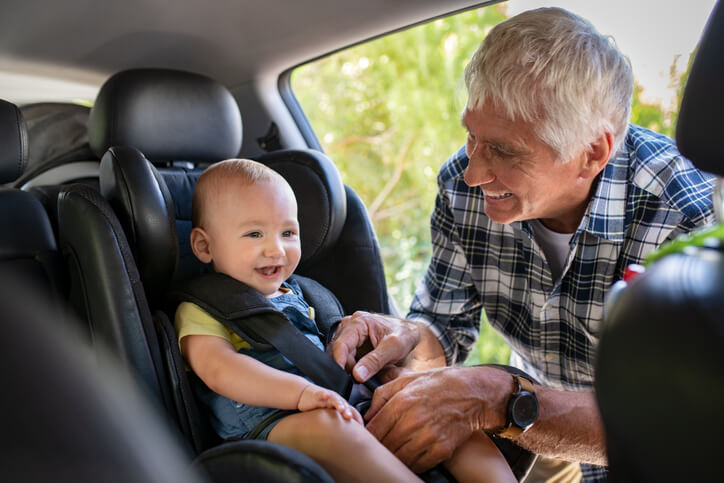
According to the National Highway Traffic Safety Administration, the best seat for your new grandbaby is rear-facing car seat. It has a harness, and gives the best support to the infant’s head, neck and spine in the event of an accident.
As children grow, how they sit in the car will change:
- Birth–3 years old: Rear-facing car seat
- 1–7 years old: Forward-facing car seat
- 4–12 years old: Booster seat
- 8–13 years old+: Seat belt
To learn more, and to find the right car seat and brand for your grandchild’s age and size, visit NHTSA’s Car Seats and Booster Seats page.
Grandparenting Styles
Books and classes may prepare you for grandparenting, but nothing can compare to the day your grandchild arrives and your new relationships begin—with both the newborn baby and its parents. According to a study by leading gerontologist Bernice Neugarten, there are five different grandparenting styles, each with strengths and possible pitfalls:
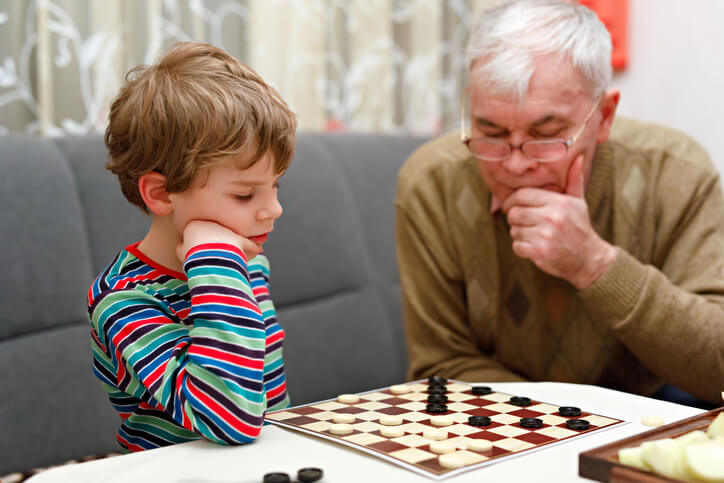
Formal Grandparents
Provide background support but do not get overly involved in decision-making or invest large amounts of time actively grandparenting. They often lend a listening ear to parents and encourage the relationship between parent and child, but should give parents plenty of space, and watch for the tendency to become too pushy or authoritative.
Surrogate Parents
May be the primary caretaker or help raise the grandchild while the parents are at work, providing structure and discipline in a role that is more akin to parent and child. If this is your role, make sure you get the downtime and support you need to avoid the risk of burnout.
The Fun Seeker
Has a playful, informal, “buddy” relationship with the grandchild that focuses on connecting with grandkids through games and having a good time. You’re likely to leave discipline to the parents, but take care to avoid undermining parental decisions—and make sure you don’t overdo and exhaust yourself!
The Reservoir of Family Wisdom
A role that both grandmothers and grandfathers play. In this role, you offer advice, dispense special skills or resources, and generally act as a family authority, but must be careful not to overstep the bounds of the parent-child relationship.
The Distant Figure
Sees their grandchildren infrequently, usually only during holidays or special occasions. This role is usually characterized by psychological distance. If you find yourself in this role, take the opportunity to examine the cause of that distance and overcome any obstacles that may prevent a closer and more rewarding relationship with your grandchild.
Grandparenting Tips and Advice
As a grandparent, you may have much experience and wisdom to offer, but it’s important to understand—and accept—that the parents are the decision makers and you play a supporting role. These tips can help you provide the help that is wanted, hold back when necessary, and keep your family functioning well.

Understand and Accept Your Role As Grandparent
You may play a role in helping raise your grandchild, but you’re not the main person in charge. Take a back seat and leave the parenting up to the parents.
- Give advice only when asked. Giving out unsolicited advice can alienate new parents and stress your relationship. Offer your wisdom only when asked, and don’t be upset or offended if they don’t put your advice to use.
- Bite your tongue: If the new parents do something that you don’t agree with or have a differing opinion on, keep it to yourself.
- Be observant, but ready to help. To avoid stepping on toes, give the parents space and follow their lead if they ask for help. For example, if a parent asks you to help clean up the toys, watch how things are organized and put away but don’t comment on how you think the toys should be put away or how messy it still looks.
- Respect the wishes and rules of the parents. They may differ from the rules you followed to raise your kids, but keep an open mind and heed the parents’ wishes. If they ask you to have your grandchildren in bed by 8 p.m., don’t put them in bed at 8:15 p.m. If they ask you not to give them sugary drinks, don’t do it.
Develop a Deeper Relationship With Your Grandchild
Don’t force a bond between you and your grandchild; let it happen naturally. Give it time and look for opportunities to interact. For example, volunteer to change diapers, or get down on the floor and play with your grandchildren. If they’re sleeping over, read them a book, or share stories about yourself or the family.
- Keep an open door. Make yourself available to help out in a pinch. If the parents need to run some errands, offer to watch your grandchild for a few hours. You’ll have baby time and the parents will have a chance to get some things done.
- Keep parents in the loop. If you’re watching your grandchild and need to go out, keep the parents informed of your whereabouts so they know how to reach you. If you’ll be getting your grandchild something to eat, ask for the parents’ input beforehand. Your grandkid may have certain dietary restrictions or allergies you may not be aware of.
- Be balanced. If you have multiple grandchildren, balance your praise and love among all of them. You don’t want one grandchild to feel that another is more favored. If you get one grandchild a special treat or gift, do the same for the others. Being balanced and fair also applies to the parents; praise them for the good work they’re doing and don’t talk negatively about one parent to another.
- Communication is key. If disagreements come up, sit down and talk as a family. Hear each other out with an open mind, and strive for understanding and to establish shared expectations. Open and honest communication is the key to healthy, strong relationships and will help you navigate whatever difficulties come your way.
Long Distance Grandparenting
Sometimes, distance happens. You and your family may live in different states, or a family move may suddenly make you a long-distance grandparent. But it’s not the end of the world. There are many ways to stay connected with your grandchild—even if you’re hundreds or thousands of miles apart.

Technology: Skype, FaceTime, Videochat
Technology makes it easier than ever to connect with people. Using computer and phone software, such as Skype or FaceTime, you can meet face-to-face for video-chat sessions with baby and parents — an experience that’s almost like being together in person. You can also use Skype to exchange instant messages and stay in touch through email and social media networks such as Facebook or Instagram. Before sharing photos on social media, though, be sure to check with the parents. Many parents are concerned with protecting their child’s privacy and prefer not to have photos posted publicly until the child is old enough to have a say.
Write Letters, Send Cards, Talk on the Phone
You don’t need technology to keep in touch with your grandchild and their family. Children of all ages love getting things in the mail. Handwritten letters and greeting cards lend a more personal touch and the extra time they take show you care. And, by committing your thoughts to paper, you’re creating a lasting keepsake your grandchild can preserve and cherish.
Of course, there’s always the phone. Conversations don’t need to be hours long; catching up on what’s going on in the life of your grandchild can help you maintain and develop the relationship.
Visit When Possible
There’s nothing like an in-person visit to deepen the bond you have with your grandchild and create special memories for everyone in the family. Whatever your grandchild’s age, look for opportunities to visit throughout the year. It may be for a special occasion—a birthday or holiday—or during summer vacation. Talk with the parents beforehand to choose the time that best works for all involved. Encourage visits to your home, too!
Step-Grandparenting
Becoming a step-grandparent can be exciting yet challenging. You want to be involved with your step-grandchildren and also sensitive to the nature of the relationship and the overall family situation. These tips can help you make the transition—whether your step-grandchild is a newborn, toddler or teen.
Tread carefully, particularly with parents and biological grandparents. Consider yourself an outsider until you’re invited into the inner circle, and even then, approach carefully to avoid stepping on toes.
Allow time for new relationships to develop. It may take a while to build trust, especially if your step-grandchild is a pre-teen or teen.
Become involved with the lives of your step-grandchildren to the level all parties feel comfortable with, but don’t overdo. Attending events—such as birthday parties and recitals—or teaching a game or skill will demonstrate your support and help develop stronger ties.
If you have both step-grandchildren and biological grandchildren, avoid showing favoritism. On gift-giving occasions, give gifts of equal value to your grandchildren of the same age. Take pride in the achievements of both your step-grandchildren and your grandchildren.
If your step-grandchild has questions or brings something up, be honest and open. Be available to help not only the grandchild and step-grandchild, but also the parents.
The Joys of Grandparenting
Grandparenting can be a time of pure love and joy—without all responsibilities and worries of being a parent on the frontline. By preparing yourself for this special chapter of life, staying in communication, and adapting to your relationships as they evolve, you can create special bonds and lasting memories that you and your grandchildren will treasure.




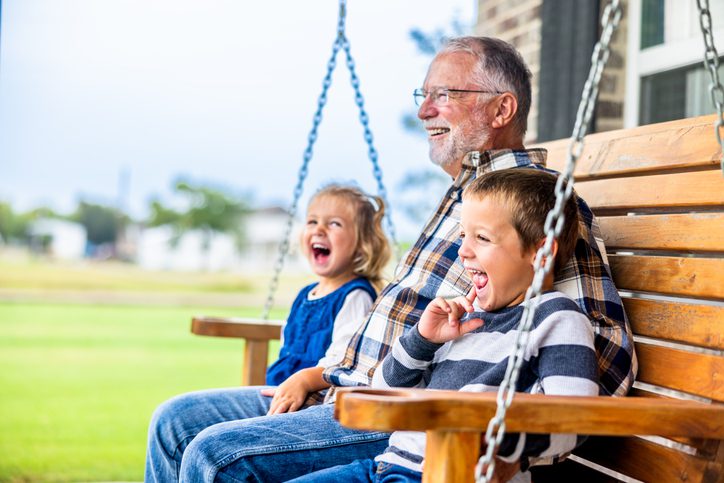
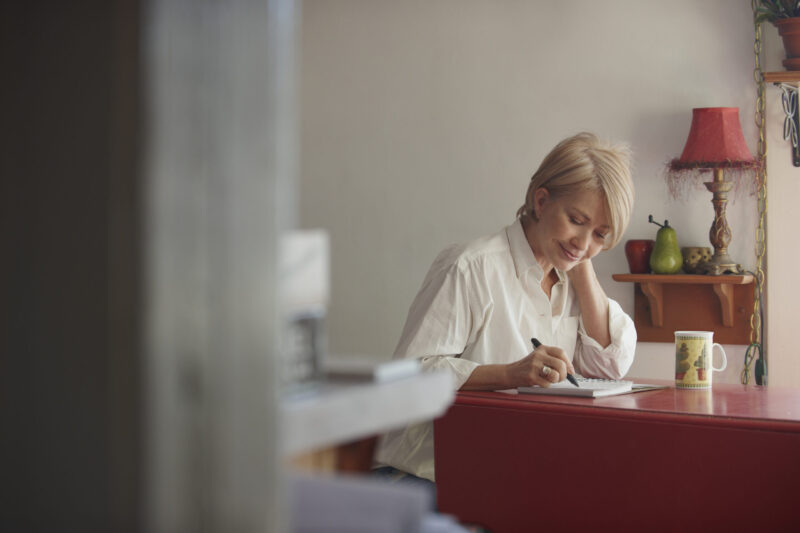

I want to take these classes to get my mind focused on becoming a loving,warm grandmother. The slander I have endured I have to recover and show my daughter I am making some life changing experiences. I would love input on how and what to do to be a responsible as a grandma and show her the motherly love that I had for her mother but wasn’t given the opportunity.